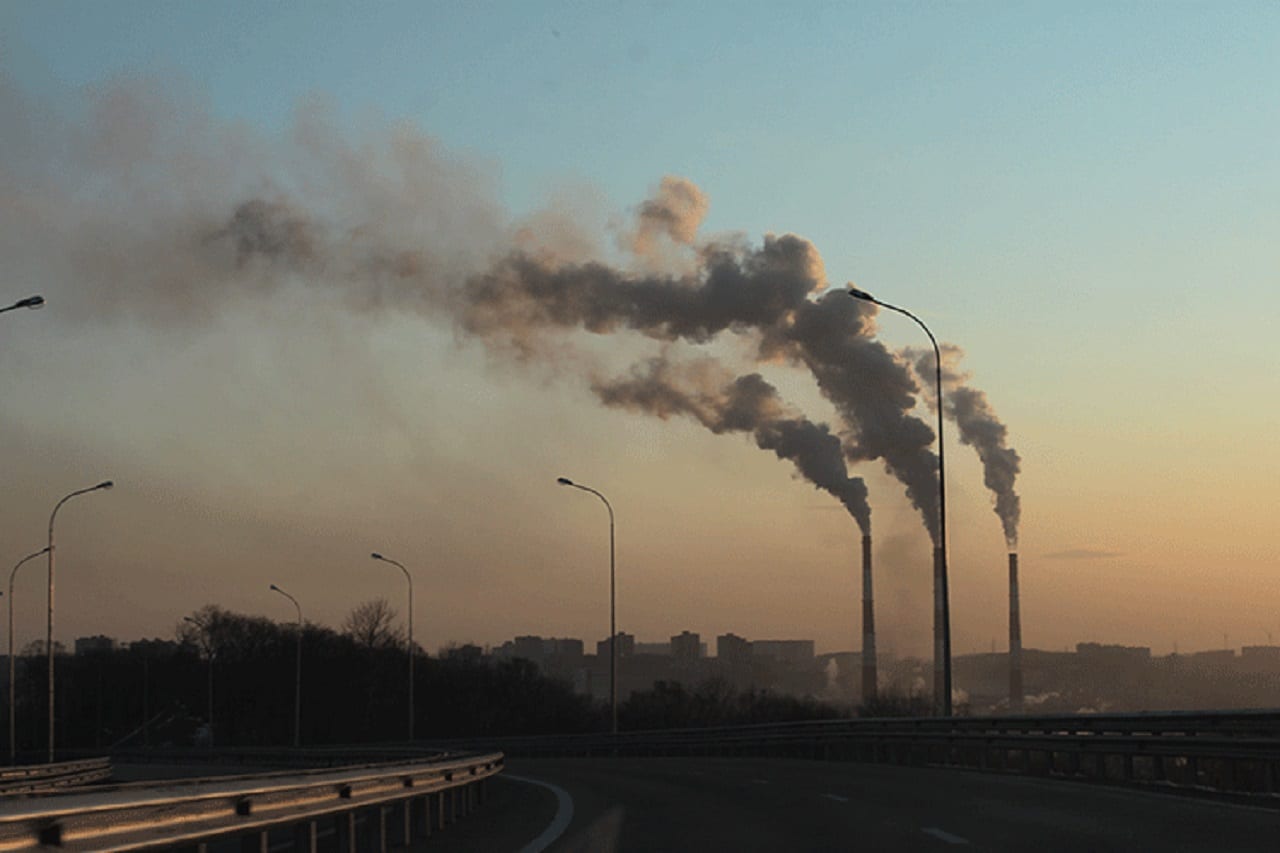The Biden program might keep the racial difference in air quality
The Biden program might keep the racial difference in air quality Tech Explorist


A Biden Administration Program and Environmental Inequalities

A program initiated by the Biden administration to address environmental inequalities, such as closing the air quality gap between white and minority communities, may face challenges due to the decision not to include racial demographics in a new tool for evaluating proposed regulations or policies.
The Impact of Disregarding Racial Demographics
A recent study reveals that the administration’s choice to exclude racial demographics from a new tool used to analyze proposed laws or policies is a contributing factor to this issue.
Disadvantaged Communities and Air Pollution
In the United States, disadvantaged neighborhoods, particularly those inhabited by low-income and minority groups, experience higher levels of air pollution compared to wealthier and predominantly white regions. These disparities are the result of decades of discriminatory land use planning and housing practices, including redlining.
The Justice40 Initiative and Climate and Economic Justice Screening Tool (CEJST)
The Biden administration has committed to ensuring that disadvantaged communities receive 40% of the benefits from its climate change and energy efforts. The Justice40 initiative utilizes the Climate and Economic Justice Screening Tool (CEJST) to identify these communities for government programs and investment. However, CEJST does not explicitly consider race and ethnicity.
The Findings of the Study
Researchers conducted air quality simulations to assess the potential impact of using CEJST to reduce fine particulate matter (PM2.5) on ambient air pollution exposures and disparities over the next 20 years. The modeling suggests that while deeper reductions in disadvantaged communities indicated by CEJST may improve overall air quality, they will not significantly reduce racial and ethnic air pollution disparities.
Study co-author Rachel Morello-Frosch, a professor at the University of California, Berkeley, and a member of the White House Environmental Justice Advisory Council, states, “There’s been a lot of concern among scientists and advocates about the fact that the CEJST does not include any indicator about the racial or ethnic makeup of the census tracts that are being screened. Our findings demonstrate that, by not including race, you lose the ability to track and target racialized inequities in environmental hazard exposures. You can improve overall air quality but lose the opportunity to eliminate racial inequities in pollution burdens if you don’t evaluate them directly.”
The Challenge of Race-Neutral Approaches
The Justice40 program aims to address racial injustices. However, the CEJST was designed to be race-neutral to avoid legal complications. The recent Supreme Court ruling prohibiting the use of race in determining college admissions raises concerns about potential challenges to the Justice40 effort, which could potentially halt the entire program.
Study co-author Joshua Apte, an associate professor at UC Berkeley, emphasizes, “Our findings emphasize that you’re not going to be able to evaluate and solve racial and ethnic inequalities for air pollution without considering race in some way because a lot of the things that you think might be a proxy for racial inequalities don’t work well for addressing the large, racialized disparities in air pollution exposure.”
The Importance of Monitoring Racial and Ethnic Impacts
The study also highlights the need for regulators to monitor the effects of air quality policies and regulations on different racial and ethnic groups. Apte and Julian Marshall have developed new air pollution simulation tools that can assist regulators in understanding the long-term effects of new laws and regulations.
According to researchers, with the help of contemporary air pollution simulation technologies, the federal government can proactively assess whether its policies will impact racial and ethnic disparities in air pollution exposure.
Recommendations for Evaluating Environmental Fairness
The study concludes that the variables used in CEJST will not effectively address the significant racial disparities in air pollution exposure in the country. Therefore, the federal government should utilize contemporary air pollution simulation methods to evaluate the effects of new and existing regulations on environmental fairness.
Journal Reference:
- Yuzhou Wang, Joshua S. Apte, et al. Air quality policy should quantify the effects of disparities. Science. DOI:10.1126/science.adg9931
SDGs, Targets, and Indicators Analysis
1. Which SDGs are addressed or connected to the issues highlighted in the article?
- SDG 3: Good Health and Well-being – The article discusses the impact of air pollution on disadvantaged communities, which is directly related to the goal of ensuring healthy lives and promoting well-being for all.
- SDG 10: Reduced Inequalities – The article highlights the environmental inequalities faced by minority communities, particularly in terms of air pollution exposure. This connects to the goal of reducing inequalities within and among countries.
- SDG 11: Sustainable Cities and Communities – The article mentions discriminatory land use planning and housing practices, such as redlining, which have contributed to environmental disparities in communities. This relates to the goal of creating sustainable cities and communities.
- SDG 13: Climate Action – The Biden administration’s commitment to ensuring that disadvantaged communities receive 40% of the benefits of climate change and energy efforts is mentioned in the article. This aligns with the goal of taking urgent action to combat climate change and its impacts.
2. What specific targets under those SDGs can be identified based on the article’s content?
- SDG 3.9: By 2030, substantially reduce the number of deaths and illnesses from hazardous chemicals and air, water, and soil pollution and contamination.
- SDG 10.2: By 2030, empower and promote the social, economic, and political inclusion of all, irrespective of age, sex, disability, race, ethnicity, origin, religion, or economic or other status.
- SDG 11.7: By 2030, provide universal access to safe, inclusive, and accessible, green, and public spaces, in particular for women and children, older persons, and persons with disabilities.
- SDG 13.1: Strengthen resilience and adaptive capacity to climate-related hazards and natural disasters in all countries.
3. Are there any indicators mentioned or implied in the article that can be used to measure progress towards the identified targets?
- Indicator for SDG 3.9: Number of deaths and illnesses attributed to air pollution.
- Indicator for SDG 10.2: Proportion of population experiencing discrimination or unfair treatment based on race, ethnicity, or other factors.
- Indicator for SDG 11.7: Proportion of population with access to safe and inclusive public spaces.
- Indicator for SDG 13.1: Number of people affected by climate-related hazards and natural disasters.
Table: SDGs, Targets, and Indicators
| SDGs | Targets | Indicators |
|---|---|---|
| SDG 3: Good Health and Well-being | Target 3.9: By 2030, substantially reduce the number of deaths and illnesses from hazardous chemicals and air, water, and soil pollution and contamination. | Indicator: Number of deaths and illnesses attributed to air pollution. |
| SDG 10: Reduced Inequalities | Target 10.2: By 2030, empower and promote the social, economic, and political inclusion of all, irrespective of age, sex, disability, race, ethnicity, origin, religion, or economic or other status. | Indicator: Proportion of population experiencing discrimination or unfair treatment based on race, ethnicity, or other factors. |
| SDG 11: Sustainable Cities and Communities | Target 11.7: By 2030, provide universal access to safe, inclusive, and accessible, green, and public spaces, in particular for women and children, older persons, and persons with disabilities. | Indicator: Proportion of population with access to safe and inclusive public spaces. |
| SDG 13: Climate Action | Target 13.1: Strengthen resilience and adaptive capacity to climate-related hazards and natural disasters in all countries. | Indicator: Number of people affected by climate-related hazards and natural disasters. |
Behold! This splendid article springs forth from the wellspring of knowledge, shaped by a wondrous proprietary AI technology that delved into a vast ocean of data, illuminating the path towards the Sustainable Development Goals. Remember that all rights are reserved by SDG Investors LLC, empowering us to champion progress together.
Source: techexplorist.com

Join us, as fellow seekers of change, on a transformative journey at https://sdgtalks.ai/welcome, where you can become a member and actively contribute to shaping a brighter future.







